Safety and Efficiency in Autonomous Vehicles through Planning with Uncertainty
Zachary Sunberg
May 25, 2018




Introduction
UAV Collision Avoidance
Lane Changing with Internal States
Solving Continuous POMDPs
POMDPs.jl

Controlling an Autonomous Vehicle is inherently a multi-objective problem
EFFICIENCY
SAFETY
Minimize resource use
(especially time)
Minimize the risk of harm to oneself and others
Increasing safety can only decrease efficiency

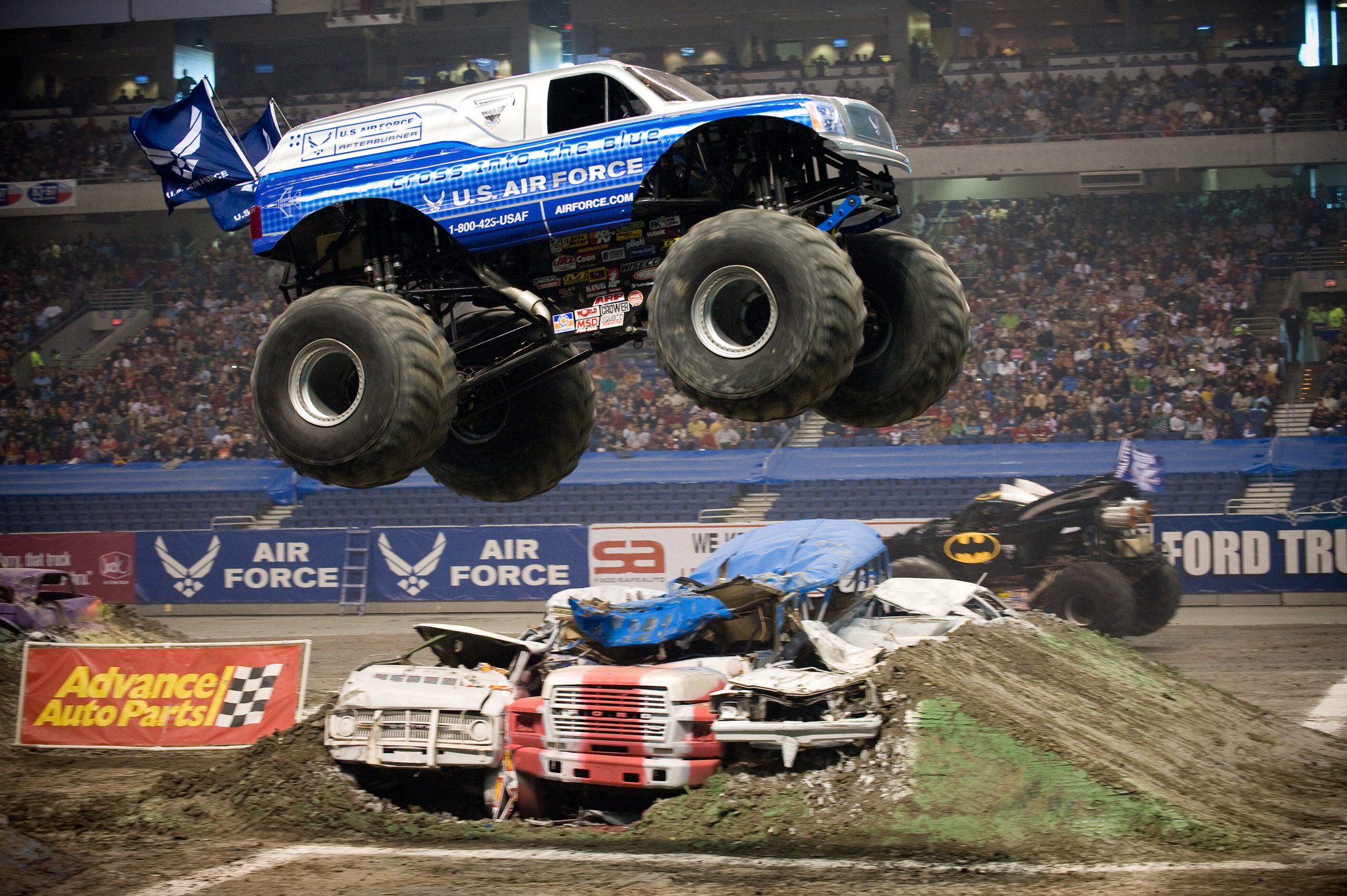
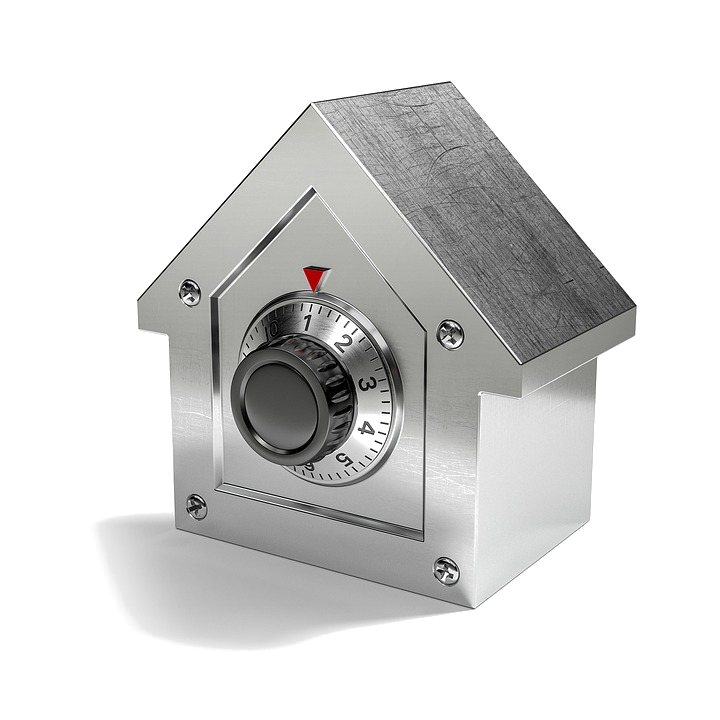
Two extremes:
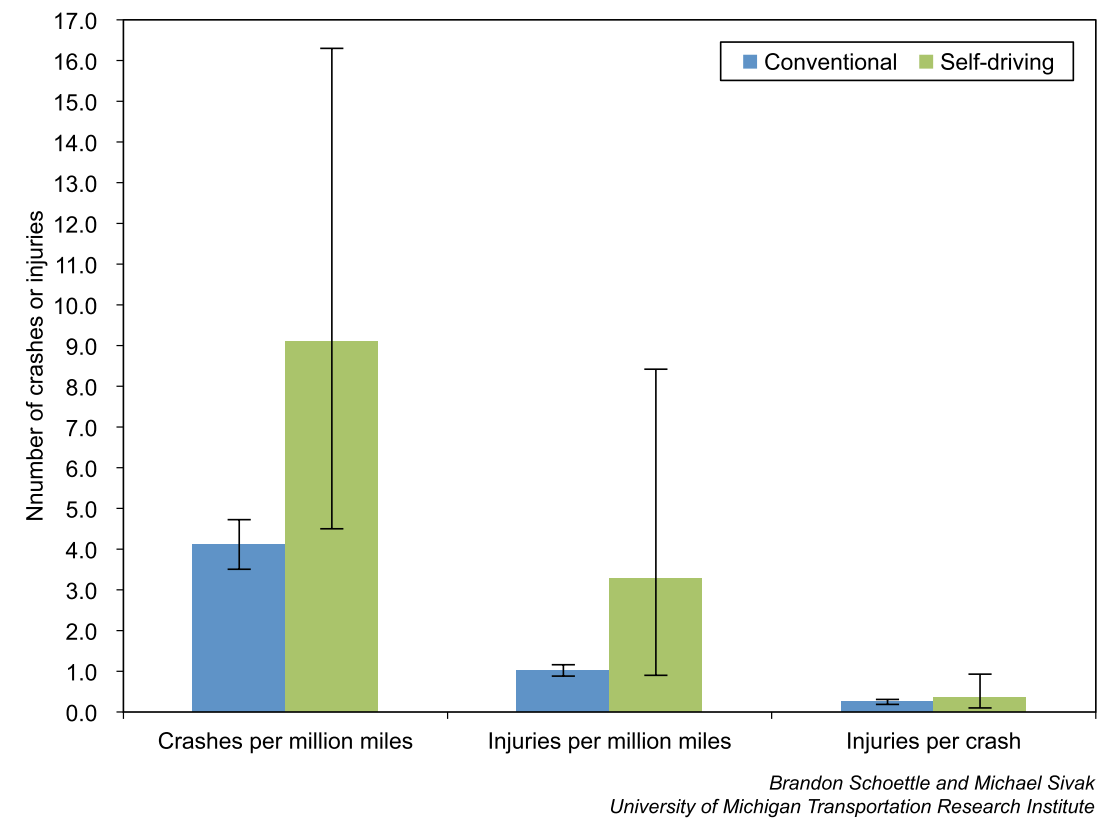
XXX Credit

“self-driving vehicles were not at fault in any crashes they were involved in.”
XXX Credit
PLANNING UNDER UNCERTAINTY
HARD SAFETY CONSTRAINTS
- Objective
- Dynamic Model
- Optimization Algorithm
A systematic approach:

Objective: maximize future reward
$$\mathop{\text{maximize}} E\left[\sum_{t=0}^{\infty} \gamma^t r_t\right]$$
$$r_t = R(s_t, a_t, s_{t+1})$$
How do we optimize both safety and efficiency?
Objective Function
$$R(s_t, a_t, s_{t+1}) = R_\text{E}(s_t, a_t, s_{t+1}) + \lambda R_\text{S}(s_t, a_t, s_{t+1})$$
Safety
Weight
Efficiency
Safety
Better Performance
Model \(M_2\), Algorithm \(A_2\)
Model \(M_1\), Algorithm \(A_1\)
Efficiency
Dynamic Model: Types of Uncertainty
Outcome
Model
State
State Transitions
Observations
State Transition Distribution
Observation Distribution
Reward



Markov Model
- \(\mathcal{S}\) - State space
- \(T:\mathcal{S}\times\mathcal{S} \to \mathbb{R}\) - Transition probability distributions
Markov Decision Process (MDP)
- \(\mathcal{S}\) - State space
- \(T:\mathcal{S}\times \mathcal{A} \times\mathcal{S} \to \mathbb{R}\) - Transition probability distribution
- \(\mathcal{A}\) - Action space
- \(R:\mathcal{S}\times \mathcal{A} \times\mathcal{S} \to \mathbb{R}\) - Reward Function

Partially Observable Markov Decision Process (POMDP)

- \(\mathcal{S}\) - State space
- \(T:\mathcal{S}\times \mathcal{A} \times\mathcal{S} \to \mathbb{R}\) - Transition probability distribution
- \(\mathcal{A}\) - Action space
- \(R:\mathcal{S}\times \mathcal{A} \times\mathcal{S} \to \mathbb{R}\) - Reward Function
- \(\mathcal{O}\) - Observation space
- \(Z:\mathcal{S} \times \mathcal{A}\times \mathcal{S} \times \mathcal{O} \to \mathbb{R}\) - Observation probability distribution
Belief
\[b'(s') = \frac{\int_{s\in\mathcal{S}} Z(o \mid s, a, s') T(s' \mid s, a) b(s) ds}{\int_{s'\in\mathcal{S}} \int_{s\in\mathcal{S}} Z(o \mid s, a, s') T(s' \mid s, a) b(s) ds ds'}\]
History: all previous actions and observations
\[h_t = (b_0, a_0, o_1, a_1, o_2, ..., a_{t-1}, o_t)\]
Belief: probability distribution over \(\mathcal{S}\) encoding everything learned about the state from the history
\[b_t(s) = P(s_t=s \mid h_t)\]
A POMDP is an MDP on the belief space.
Solving MDPs and POMDPs - The Value Function
$$\mathop{\text{maximize}} V_\pi(s) = E\left[\sum_{t=0}^{\infty} \gamma^t r_t \bigm| s_0 = s, a_t = \pi(s_t) \right]$$
$$V^*(s) = \max \left\{R(s, \pi(s)) + \gamma E\Big[V^*\left(s_{t+1}\right) \mid s_t=s, a_t=\pi(s)\Big]\right\}$$
Involves all future time
Involves only \(t\) and \(t+1\)
$$Q_\pi(s, a) = E\left[\sum_{t=0}^{\infty} \gamma^t r_t \bigm| s_0 = s, a_0 = a, a_t = \pi(s_t)\right]$$
$$V^*(s) = \max_{a \in \mathcal{A}} Q^*(s,a)$$
Solving MDPs and POMDPs - Offline vs Online



Offline
(Value Iteration)
Online
(Sequential Decision Tree)
QMDP
\[Q_{MDP}(b, a) = \sum_{s \in \mathcal{S}} Q_{MDP}(s,a) b(s) \geq Q^*(b,a)\]
Equivalent to assuming full observability on the next step.
Will not take costly exploratory actions.



Introduction
UAV Collision Avoidance
Lane Changing with Internal States
Solving Continuous POMDPs
POMDPs.jl

Trusted and Optimized UAV Collision Avoidance

Challenge 1: Horizontal maneuvers




Traditional Solution: Altitude Separation
UAVs Require Horizontal Maneuvers
Challenge 2: Certification
- Government agencies and vehicle operators often seek certification that a control system will never command a dangerous action.
- Simple, deterministic algorithms are much easier to certify.


Bach, R., Farrell, C., & Erzberger, H. (2009). An Algorithm for Level-Aircraft Conflict Resolution.
Additional buffer compensates for uncertainty



1.0
1.5
2.0
3.0
4.0
MDP Formulation
\(s=\left(x^{(o)}, y^{(o)}, \psi^{(o)}, x^{(i)}, y^{(i)}, \psi^{(i)}, \text{dev}\right)\)
\(a = \phi^{(o)}\), \(\mathcal{A} = \{-45^\circ, -22.5^\circ, 0^\circ, 22.5^\circ, 45^\circ\}\)
\(R(s, a) = -c_\text{step} + r_\text{goal} \, \text{in\_goal}(s) - c_\text{dev} \, \text{dev}(s,a) - \lambda \,\text{nmac}(s) \)
Transition: \(\quad \dot{\psi}^{(o)}_t = \frac{g \, \tan \phi^{(o)}_t}{v^{(o)}}\), \(\quad \dot{\psi}^{(i)}_t \sim \mathcal{N}(0, 10^\circ/s)\)
Ownship State
Intruder State
Bank Angle


Approximate Value Iteration
\[\tilde{V}(s) = \beta(s)^\top \theta\]
\[\tilde{V}_{k+1}(s) = \Pi \mathcal{B}[\tilde{V}_k](s)\]
At each iteration, sample \(N_\text{state}\) states and estimate the value with
\[v_{k+1}[n] \gets \max_{a \in \mathcal{A}} \left\{R(s^{[n]},a) + \frac{1}{N_{\text{EV}}}\sum_{m=1}^{N_{\text{EV}}} \beta(F(s^{[n]}, a, w_m))^\top \theta_k \right\} \text{,}\]
then, project onto the linear subspace with
\[\theta_{k+1} = \text{argmin} \sum_{n=1}^{N_\text{state}} \left( \beta\left(s^{[n]}\right)^\top \theta - v_{k+1}[n] \right) ^2 \text{.}\]
Features


Value Function and Policy
\(45^\circ\)
\(-45^\circ\)
\(\phi=0^\circ\)




Price of certifiability




Trusted Resolution Logic

Directly Optimized Turn Rate
Maintaining certifiability
\[\tilde{\mathcal{A}}(s) = \left\{a \in \mathcal{A} \mid \text{mindist}(s, a) \geq D_\text{NMAC} \right\}\]
Price of certifiability




Trusted Resolution Logic

Directly Optimized Turn Rate

Trusted Optimized Turn Rate




Introduction
UAV Collision Avoidance
Lane Changing with Internal States
Solving Continuous POMDPs
POMDPs.jl


Tweet by Nitin Gupta
29 April 2018
https://twitter.com/nitguptaa/status/990683818825736192
Human Behavior Model: IDM and MOBIL


POMDP Formulation
\(s=\left(x, y, \dot{x}, \left\{(x_c,y_c,\dot{x}_c,l_c,\theta_c)\right\}_{c=1}^{n}\right)\)
\(o=\left\{(x_c,y_c,\dot{x}_c,l_c)\right\}_{c=1}^{n}\)
\(a = (\ddot{x}, \dot{y})\), \(\ddot{x} \in \{0, \pm 1m/s^2\}, \dot{y} \in \{0, \pm 0.67 m/s^2\}\)

Ego physical state
Physical states of other cars
Internal states of other cars
Physical states of other cars

- Actions filtered so they can never cause crashes
- Braking action always available
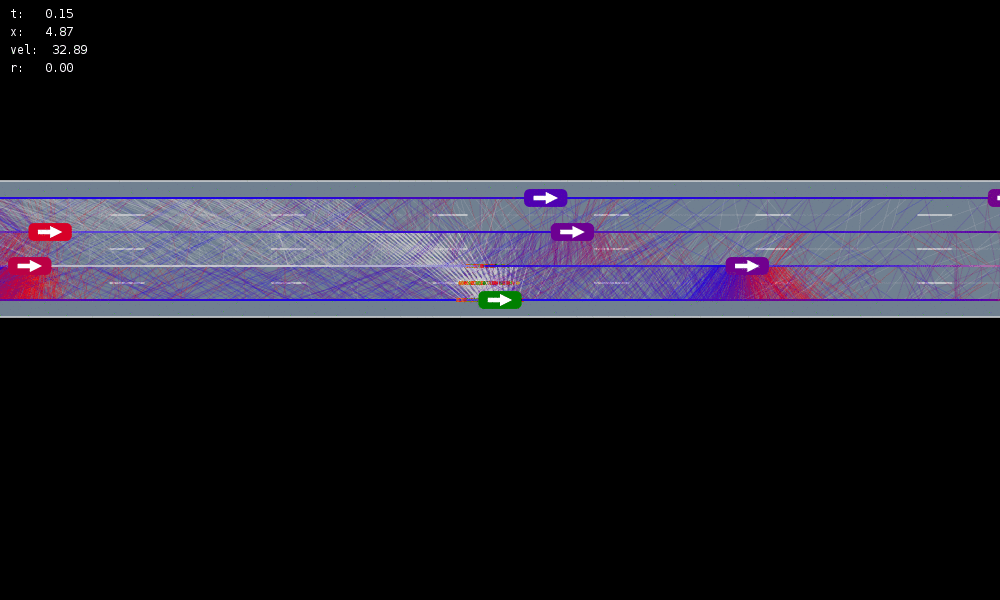








Assume normal





Outcome only
Omniscient
Mean MPC
QMDP
POMCPOW
Simulation results

Assume normal





Outcome only
Omniscient
Mean MPC
QMDP
POMCPOW







Assume normal




Omniscient
Mean MPC
QMDP
POMCPOW




Introduction
UAV Collision Avoidance
Lane Changing with Internal States
Solving Continuous POMDPs
POMDPs.jl


Monte Carlo Tree Search
POMCP

- Uses simulations of histories instead of full belief updates
- Each belief is implicitly represented by a collection of unweighted particles
Light-Dark Problem

State
Timestep
Accurate Observations
Goal: \(a=0\) at \(s=0\)
Optimal Policy
Localize
\(a=0\)
Necessary Conditions for Consistency [1]
[ ] An infinite number of child nodes must be visited
[ ] Each node must be visited an infinite number of times
Solving continuous POMDPs - POMCP fails
[1] Adrien Coutoux, Jean-Baptiste Hoock, Nataliya Sokolovska, Olivier Teytaud, Nicolas Bonnard. Continuous Upper Confidence Trees. LION’11: Proceedings of the 5th International Conference on Learning and Intelligent OptimizatioN, Jan 2011, Italy. pp.TBA. <hal-00542673v2>
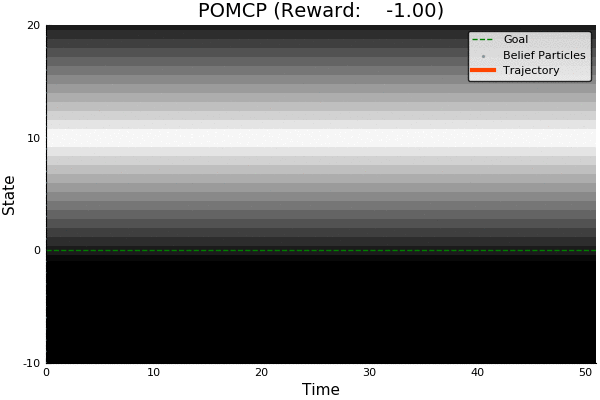

POMCP
✔
✔
Limit number of children to
\[k N^\alpha\]



POMCP
POMCP-DPW
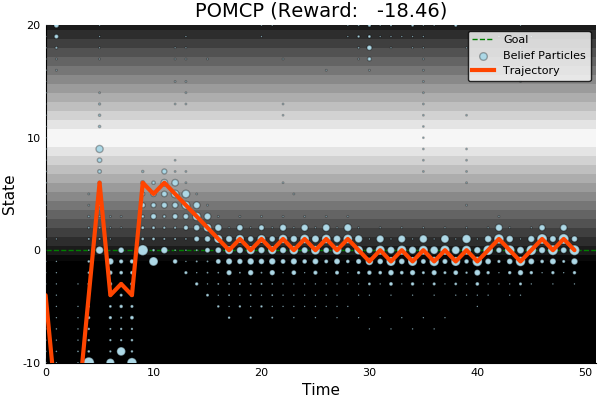

POMCP-DPW converges to QMDP
Proof Outline:
-
Observation space is continuous → observations unique w.p. 1.
-
(1) → One state particle in each belief, so each belief is merely an alias for a that state
-
(2) → POMCP-DPW = MCTS-DPW applied to fully observable MDP + root belief state
-
Solving this MDP is equivalent to finding the QMDP solution → POMCP-DPW converges to QMDP

POMCP-DPW
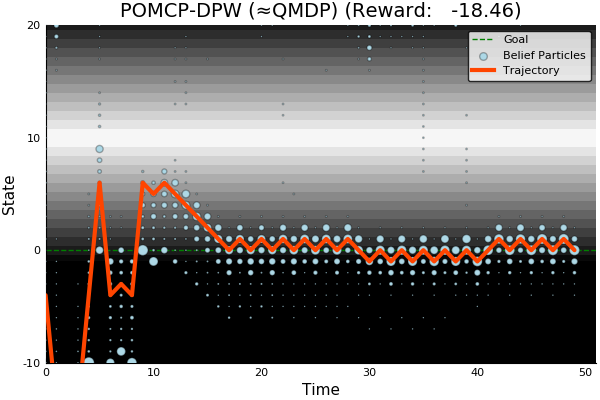
Necessary Conditions for Consistency
[ ] An infinite number of child nodes must be visited
[ ] Each node must be visited an infinite number of times
[ ] An infinite number of particles must be added to each belief node
✔
✔
✔
Use \(Z\) to insert weighted particles


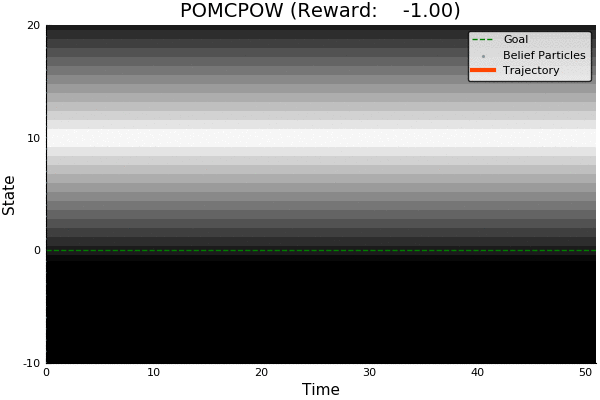



POMCP
POMCP-DPW
POMCPOW




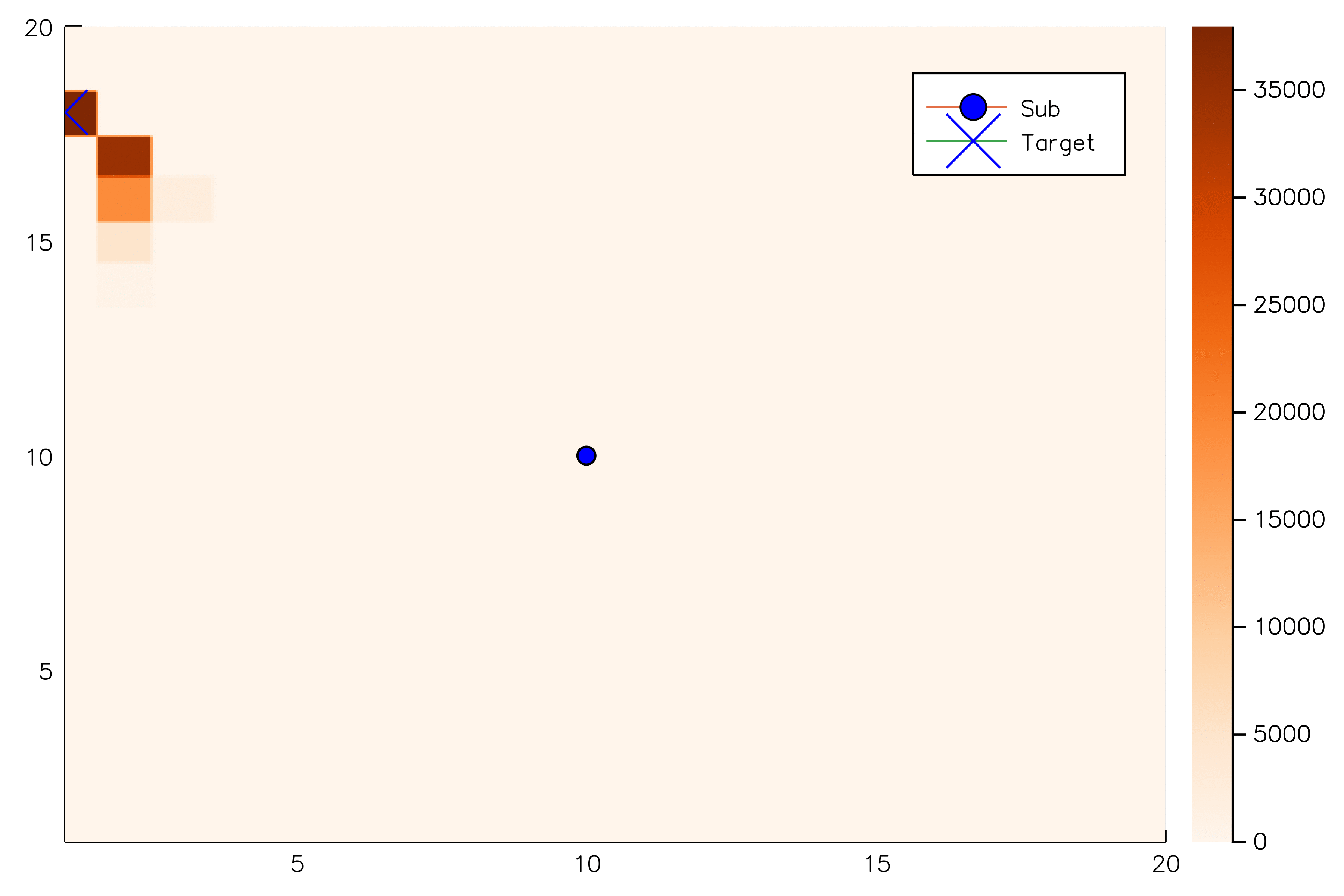


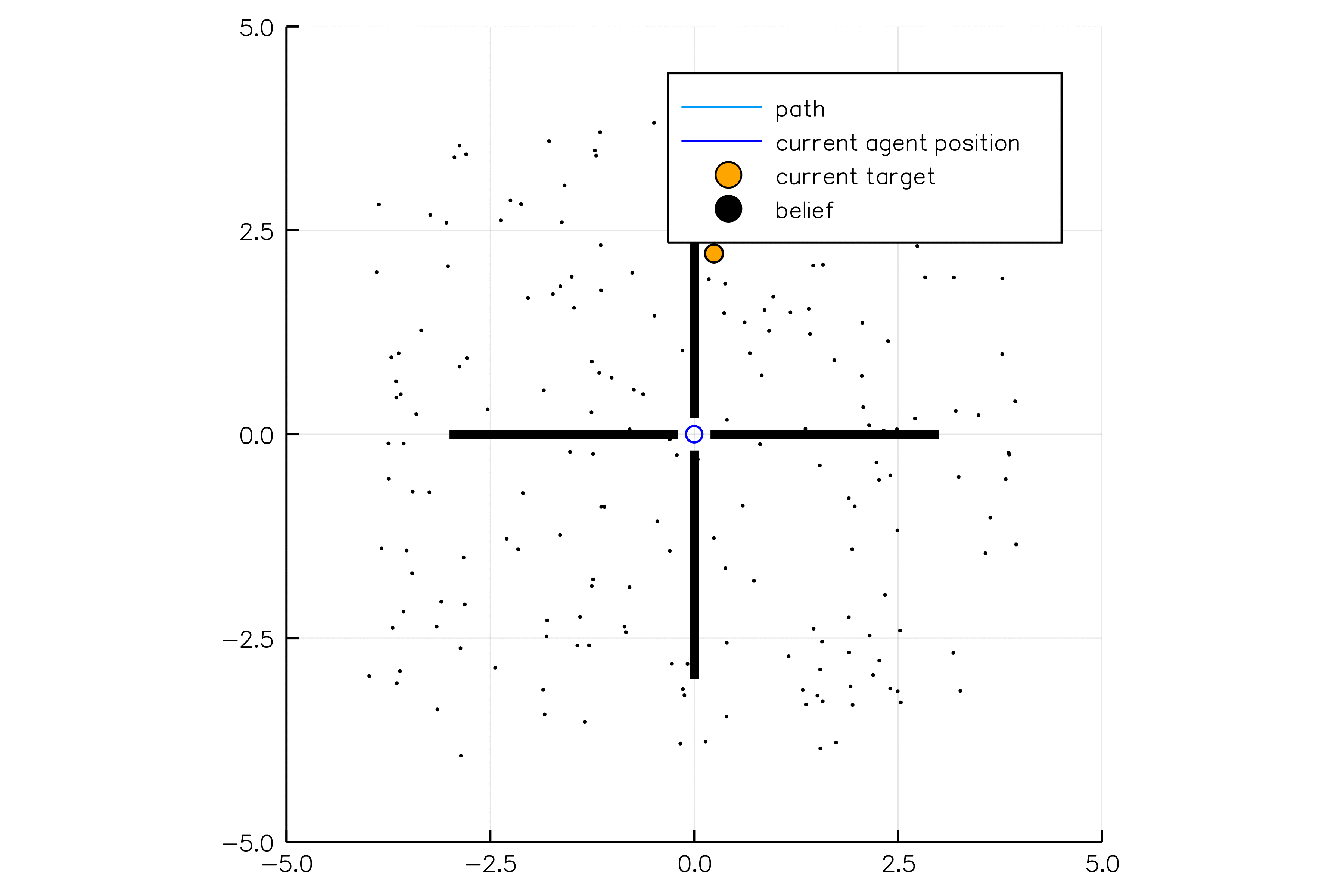




Introduction
UAV Collision Avoidance
Lane Changing with Internal States
Solving Continuous POMDPs
POMDPs.jl

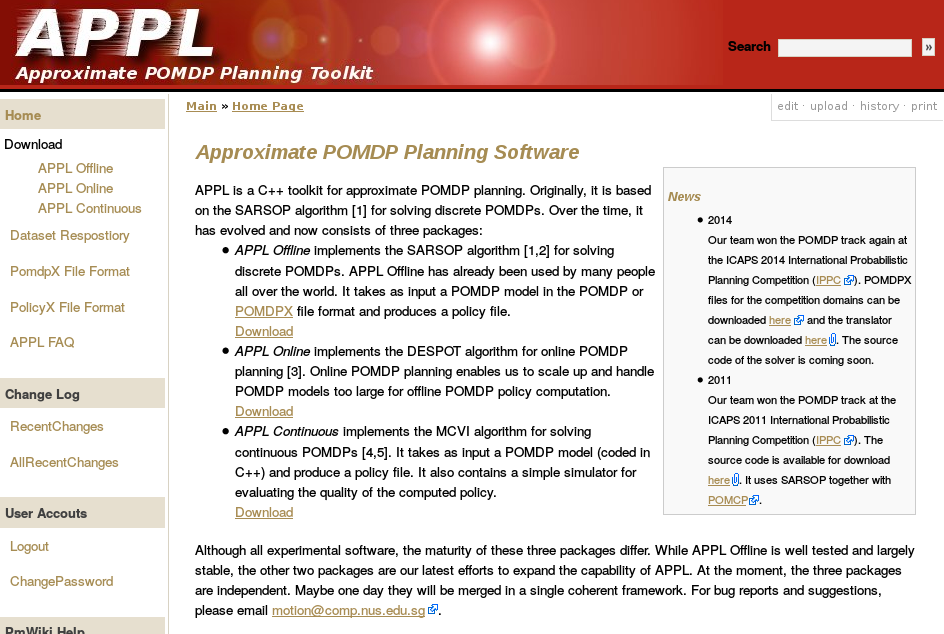
Previous C++ framework: APPL
"At the moment, the three packages are independent. Maybe one day they will be merged in a single coherent framework."


POMDPs.jl - An interface for defining and solving MDPs and POMDPs in Julia

Contributions
- Quantified the price of certifiability for a UAV collision avoidance system and showed how to reduce it.
- Quantified the safety and efficiency advantage of planning with internal states.
- Developed online algorithms for continuous POMDPs.
- Showed that current solvers and naive double progressive widening are suboptimal.
- Used weighted particle filtering to achieve first performance better than QMDP.
- Led development of POMDPs.jl



Acknowledgements
Thesis Defense v1
By Zachary Sunberg
Thesis Defense v1
- 454



